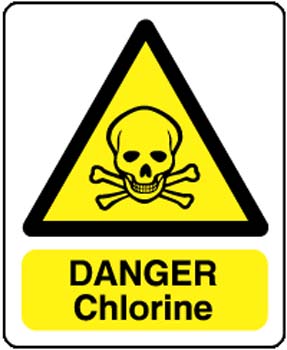
Causation Reports
Chlorine Letter Report

In man, WWI exposures to chlorine were many, but documentation of the persistent effects of inhaling the gas is not particularly good. Some reports described chronic asthma, chronic bronchitis, anoxemia, emphysema, pulmonary edema, and bronchopneumonia. Cardiovascular effects also were noted in some exposed individuals.
Human exposure to chlorine is known to result in obstructive, restrictive, and reactive respiratory effects. Obstructive effects include chronic obstructive pulmonary disease or COPD, bronchitis, tracheobronchitis, chronic bronchitis, bronchoconstriction, airway obstruction, and mucus membrane damage in upper respiratory tract. In addition, exposure to high levels of chlorine results in deep lung changes such as in restrictive pulmonary function effects. These changes include atelectasis resulting in hypoxemia, pulmonary edema, pneumonia, abnormal chest radiograms including mottling, and patches of irregular densities with atelectasis, patchy infiltrates of the lung, permanent damage to the pulmonary parenchyma and alveolar capillaries, and death. One study involving a train derailment and several deaths resulted in significant airway damage and inflammation in survivors.
Acute exposures to chlorine result in signs and symptoms that are fairly consistent in the reported literature. The following symptoms are reported to be related to acute exposure to chlorine: cough, dyspnea, eye irritation, chest tightness, throat irritation and horseness, nausea/vomiting, yellow purulent sputum, among other symptoms as indicated in the numerous reviews on the subject.
Persistent symptomatology in man exposed to chlorine include persistent cough, dyspnea, shortness of breath, anoxia, hypoxemia, decreased ability to detect odor, bronchospasm, wheezing, Reactive Airways Disease Syndrome (RADS), hyperreactive airways, chronic rhinitis and chronic asthma. Additional symptomatology noted includes greenish-yellow purulent sputum production, and decreased pulmonary function parameters including air flow and residual volume. It also has been reported that smokers are more responsive to the adverse effects of chlorine versus non-smokers.
Studies of animals exposed to chlorine provide some aid in determining the mechanism of action and the associated pathology resulting from controlled exposures at different concentrations of chlorine. Animals exposed to chlorine have demonstrated a variety of responses. Fisher 344 rats, after being exposed to low levels of chlorine, have been reported to show hyperplasia and hypertrophy of epithelial cells of the respiratory bronchioles, alveolar ducts, and alveolae, while rabbits have demonstrated anatomical emphysema with distortion of the alveolar architecture at higher levels of exposure. Exposed Swiss mice showed squamous metaplasia, exfoliation, erosion, ulceration, and necrosis of the respiratory epithelium. In addition, terminal bronchiolitis also has been reported. Another study in rats and mice reported similar findings. Exposed monkeys again showed loss of cilia, decreased goblet cells, emphysema, bronchiolitis obliterans, and pneumonia. Cattle inadvertedly exposed to chlorine, on autopsy, showed emphysema, chronic tracheitis, alveolar edema, hemorrhage, and atelectasis. One study of 28 patients involved bronchial brushings after chlorine exposures and at Day 5 showed basal cell and goblet cell hyperplasia, acute inflammation, and chromatolysis of columnar epithelium with fibrotic repair processes noted by Days 15 and 25.

Causation Reports
- Benzene
- Carbon Monoxide - NEW
- Chlorine Letter Report - NEW
- Ephedrine
- Hexavalent Chromium - NEW
- Lead - NEW
- Lindane
- Manganese and Welding Fumes
- Marijuana Letter Report - NEW
- Methadone
- Methotrexate Letter Report - NEW
- Ozone - NEW
- Sulfur Dioxide - NEW
- Vinyl Chloride
- Vioxx
Toxicology Notes and Literature
- Alcohol Notes
- Arsenic References
- Cocaine References
- Carbon Monoxide Notes
- Creosote Notes
- Diesel Fumes
- Dramshop Blurb
- Marijuana References
- Ozone Blurb
Toxicology Litigation Support
- Class Action & Toxic Tort
- Expert Witness & Trial Support
- Insurance Defense & Workers Compensation
- Chinese Dry Wall & Slide Presentation
- Causation Slide Presentation
- Structuring an Expert Report Slide Presentation
- 1,4 - Dioxane
- Alcohol
- Arsenic
- Baycol
- Cocaine
- Creosote
- Diesel Fumes
- Fentanyl
- Formaldehyde
- Marijuana
- Oil Spills
- PCBs and Dioxins
- Perchloroethylene, Trichlorothylene and Chlorinated Hydrocarbons
- Phenylpropanolamine (PPA)
- Zyprexa

